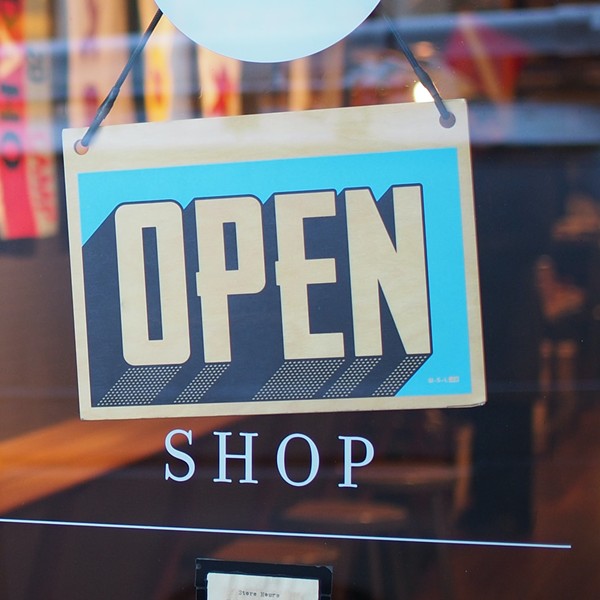We inhabit a world whose dominant mental model is big and global. For most people, “business” means large corporations with customers and facilities around the globe. Two hundred years ago, the typical person never traveled more than 75 miles from their home in his or her lifetime. Today, we think nothing of it if someone zips off to Peru or Thailand for a holiday.
Our century-old Culture of Big carries big risks. Imagine a global economy that was massively interconnected, totally dependent on a commodity with highly volatile pricing and profoundly disruptive geopolitical implications (like, say, oil), and subsidized in a manner that totally disregarded real environmental costs. Sounds pretty precarious, doesn’t it? Yet that is precisely what we have. The Culture of Big has brought us to the verge of a Big Collapse.
Could we be doing it differently? Yes, we could, by replacing “big” and “global” with “small” and “local.” Proponents of this increasingly popular economic strategy envision a web of thriving locally owned small businesses that collectively preserve local character and culture and bring our Main Streets back to life while ensuring the sort of stable, long-term economic foundation that increasingly appears beyond the reach of our top-heavy Culture of Big.
The local-economy meme isn’t new. It got its first big boost from E. F. Schumacher’s Small Is Beautiful in the early 1970s, and received new life from David Korten with works like When Corporations Rule the World (2001) and The Great Turning (2006). Another prominent bearer of the local-economy torch is Michael Shuman, whose books Going Local (2000) and The Small-Mart Revolution (2007) make a compelling case for local economic self-reliance. Shuman recently accepted a position as director of research and public policy for the Business Alliance for Local Living Economies (BALLE), an organization dedicated to building local economies. Earlier this year, I caught up with him to discuss Small versus Big in a time of dramatic change.
What’s the rationale for buying locally?
There are four strong arguments for why locally owned businesses contribute more to the economy than other businesses.
First, local businesses don’t move. They’re reliable generators of wealth for the local community. Local governments often focus on attracting or retaining big corporations, only to find that at some point down the road they flee. Local businesses stick around and generate income for years and often generations.
Second, local businesses have a higher economic multiplier. What this means is that a dollar spent at a local business tends to circulate in the local economy longer. About six years ago, a study was conducted of economic multipliers in Austin, Texas. When a person spent $100 at a Borders bookstore, $13 stayed in the local economy. When the books were purchased at a locally owned bookstore, $45 out of the $100 recirculated locally. Many similar studies have been conducted and they all point to the same conclusion.
Third, local businesses have a size and character that is consistent with leading theories of what makes a community flourish. People want walkable communities. Megamalls and industrial aren’t compatible with this, but small and home-based locally owend businesses are. Communities built around locally owned businesses are also more appealing to the so-called “creative class,” a term coined by the social scientist Richard Florida to describe knowledge workers and other “creatives.” These people are a key driving force of economic development, and they’re drawn to communities that are diverse, entrepreneurial, and fun to live in—in short, communities with lots of locally owned businesses. In addition, tourists tend to be drawn to local businesses.
Fourth, local businesses have a smaller carbon footprint because their inputs and their markets tend to be more local.
To what extent is the culture shifting in the direction of buying locally? How much traction is the movement getting?
Over the last five years, what began as mostly a public curiosity has turned into a torrent of interest. This is because the main crises afflicting Americans are clearly solvable through greater localization. Take the challenge of unstable oil prices. The more we localize, the less vulnerable we are to unstable Arab potentates.
The sinking US dollar provides another example: imports are becoming more expensive. This means that even in manufacturing, now dominated by China, there is the prospect of local manufacturing becoming competitive again.
Finally, when you come to the financial crisis, which is the mother of all the crises we’ve had in recent years, there’s compelling empirical evidence that local banks have done much better than the global banks. They’ve been more prudent and more ethical.
















